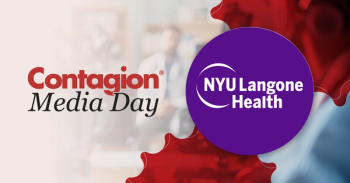
Antibiotic Adverse Drug Events Linked to Nearly 70,000 Pediatric ED Visits Annually
A new analysis by CDC investigators found that nearly 1 in 400 children aged
Antibiotic resistance is an urgent public health threat that is often the result of inappropriate prescribing decisions. Efforts to improve prescribing practices have historically focused on the dangers of antibiotic resistance, however, adverse drug events related to antibiotics are also a serious danger, especially in children.
In a new analysis conducted by a team from the US Centers for Disease Control and Prevention (CDC), the investigators found that 69,464 children <19 years visit the emergency department (ED) each year due to adverse drug events (ADE).
“Quantifying the risks of antibiotic ADEs can provide additional information to help clinicians and parents/caregivers weigh the risks and benefits of antibiotic treatment,” the investigators wrote in the
The investigators used data from both the National Electronic Injury Surveillance System—Cooperative Adverse Drug Event Surveillance Project (NEISS-CADES) and the Quintiles IMS National Prescription Audit (NPA) to identify antibiotics that resulted in the highest frequencies and rates of ED visits for ADEs and pediatric patients at the highest risk for ADEs.
The data analyzed from NEISS-CADES had been collected from 2011 to 2015 from 55 to 62 hospitals depending on the year. For their analysis, investigators reviewed ED records to identify clinician-diagnosed ADEs and the antibiotics (oral and injectables) implicated in each ADE, along with patient-specific information such as age, the ADE experienced, and treatments that were administered.
The NPA includes information from approximately 48,000 retail pharmacies and provided national estimates of oral antibiotic prescriptions dispensed from pharmacies.
ADEs were classified as allergic reactions, side effects, excess doses, injection site reactions and/or choking. Furthermore, the events were evaluated on a hierarchical scale.
The investigators found that among 6,542 surveillance cases, there were an estimated 69,464 ED visits (95% CI 53,488-85441) made annually due to ADEs among children.
Additionally, ED visits for antibiotic ADEs accounted for 46.2% (95% CI, 43.2%-49.1%) of all ED visits for ADEs from a systemic medication in this age group. Among children aged <2 years, antibiotics were implicated in nearly two-thirds of ED visits for ADEs (95% CI, 60.0%-67.8%).
The vulnerability of young children was emphasized further in that the population rate of ED visits for antibiotic \-related ADEs was 4 times higher for children aged <2 years compared with children aged 10 to 19 years. (23.8 [95% CI, 17.8-29.8) vs 5.2 [95% CI, 4.0-6.4] ED visits her 10,000 population, respectively). Additionally, 86% of ADEs that presented to the ED were related to allergic reactions, which were more common in younger populations.
In exploring the types of antibiotics that resulted in the most ADEs, the investigators found that in 95.9% of ED visits for antibiotic ADEs in children, a single class of oral antibiotics was implicated. The most commonly implicated antibiotics were oral penicillins, which accounted for about 55.7% of annual ED visits (95% CI, 30 311- 47,048). Furthermore, Amoxicillin was the most commonly implicated antibiotic among children <9 years and sulfamethoxazole/trimethoprim was most commonly implicated among children between 10 and 19 years.
From the findings of this analysis, the investigators indicate that when it comes to reducing antibiotic prescribing, the focus should be on the immediate risks to individual patients. “For example, the finding that each year, nearly 1 in 400 children aged <2 years are brought to an ED for antibiotic ADEs might help remind clinicians that antibiotic ADEs are near-term events that can be clinically significant and consequential for pediatric patients,” the authors write.
Additionally, parents and caregivers could overestimate the benefit of antibiotics and their expectation or demand could lead to a health care provider improperly prescribing or over-prescribing, the authors write. As such, health care providers should focus on communicating information about potential antibiotic related ADEs to provide valuable education about the risks of antibiotic use.
Newsletter
Stay ahead of emerging infectious disease threats with expert insights and breaking research. Subscribe now to get updates delivered straight to your inbox.
























































































































































































































































































